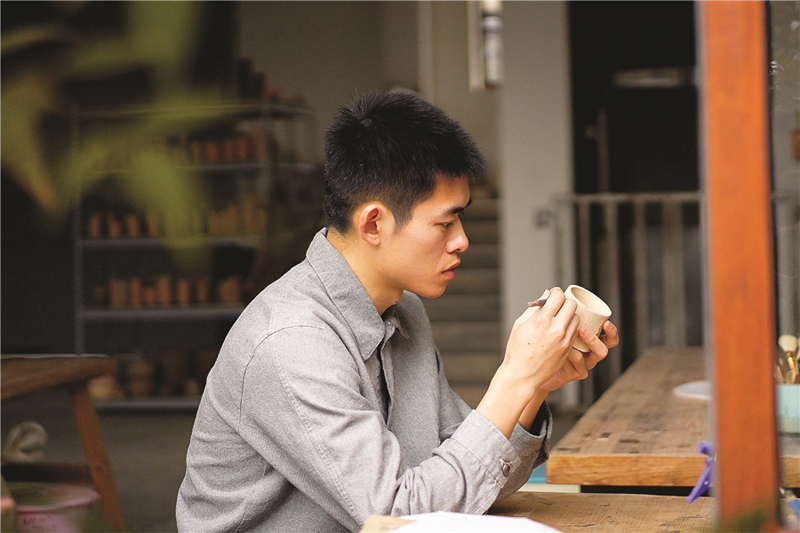Creating tradition with a glaze of modernity
There's big room for modern design and innovation that would help popularize the ancient art among younger consumers. [Photo provided to China Daily]
Ceramic craftsman brings style to ancient skill with innovative design.
Ye Chenxi turned away from the lure of big city life seven years ago and went back to his mountainous home to carry on the family tradition.
The 29-year-old from Longquan, a small county-level city of East China's Zhejiang province, has been working on modern design for celadon, a green-glazed Chinese ceramic that first appeared during the Three Kingdoms (220-280) and reached its zenith in the middle and late periods of the Song Dynasty (960-1279).
Longquan has been a major site for celadon production.
The Longquan celadon features multiple layers of greenish or grayish blue glaze, which resemble jade.
Ye's family has been engaged in celadon craftsmanship for more than 200 years, from the reign of Emperor Jiaqing (1796-1820) of the Qing Dynasty (1644-1911).
Ye's father Ye Xiaochun is a sixth generation inheritor.
Ye Xiaochun spent five years experimenting with a recipe, lost for a thousand years, for celadon products with a cracked ice surface. He eventually restored the stunning glaze pattern in 2001.
"It was a sense of responsibility that had me decide to carry on what my family has been doing," Ye Chenxi says.
It was no easy choice. By the time he finished product and interior design studies in college in Hangzhou, capital of Zhejiang province in 2015, Ye says he had grown used to city life.
"I had developed a circle of friends, and enjoyed visiting various exhibitions on weekends," he says.
But celadon's pull on him got stronger as childhood memories flashed back and his design expertise gave him a new perspective.
Celadon has been widely used in Longquan, where Ye spent many a childhood summer vacation at his grandparents' place.
"The stretchy green mountain and farmlands leapt into my eyes when I opened the window in the morning," he says.
"It was just close to beauty of the glaze color of celadon."
Across the river, he often saw wisps of smoke rise from the chimney of the ceramic plant where his father worked.
Ye played with his friends at the plant sometimes, and the scene where adults were working on the clay was also etched on his mind.
"The furnace was huge and could take in hundreds of bottles and plates," he recalls.
"The grown-ups would cheer and laugh once the kiln furnace was opened and arrays of celadon products jumped into the eye."
At dinner time, Ye's grandmother would serve steaming food on the celadon wares.
"Now I think of it, the green color really set off the food, stimulating one's appetite," Ye says.
After he looked at celadon through the eye of a design student, Ye discerned the potential of celadon innovation.
In his opinion, the overall celadon industry has been strictly sticking to tradition and there's big room for modern design and innovation that would help popularize the ancient art among younger consumers.

